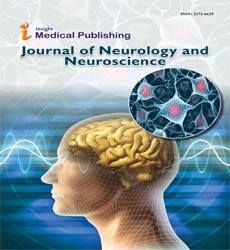Abstract
Expression of Augmenter of Liver Regeneration (ALR) in female and Male Mouse Prosencephalon: A New Approach for the Comprehension of Gender-Related Brain Biology
Background: Augmenter of liver regeneration (ALR) is an antioxidant, antiapoptotic and mitochondrial-protective factor. Evidence exists that (i) ALR is variously expressed by many neurons in the central nervous system; (ii) ALR is differently expressed in female and male cells; (iii) neurodegenerative diseases triggered by dysregulation of cell normoxic conditions differently affect the 2 sexes.
Aim: Aim of the present study was to analyze the ALR presence in the prosencephalon of female and male mice and evaluate whether differences in expression exist between the two genders.
Methods: Harvested prosencephala were investigated by Western blotting and immunohistochemistry to assess ALR expression.
Results: Western blotting revealed 2 ALR isoforms, ALR-21 and ALR-23, both more expressed in male prosencephalon. Immunohistochemistry revealed ALRimmunoreactive neurons diffusely distributed in the prosencephalon, but with a significantly higher number in male prosencephalon.
Conclusion: The different ALR expression level in female and male mouse prosencephalon may represent a marker of sexual dimorphism. The higher ALR expression seen in male prosencephalic neurons suggests that ALR, an antioxidant factor, could parallel the antioxidant effect of female sex steroid hormones that are known to be more effective compared to the male sexual steroids in protecting against the oxidative stress. These data open new options to study the neurodegenerative diseases, particularly those showing gender differences in terms of epidemiology.
Author(s):
Lorenzo Polimeno, Loredana Lorusso, Giuseppe Calamita, Angela Tafaro, Roberto Tamma, Mariasevera Di Comite, Anna Rizzi, Luigi Santacroce, Domenico Ribatti and Vincenzo Benagiano*
Abstract | Full-Text | PDF
Share this

Abstracted/Indexed in
- Google Scholar
- Open J Gate
- Genamics JournalSeek
- The Global Impact Factor (GIF)
- China National Knowledge Infrastructure (CNKI)
- Directory of Research Journal Indexing (DRJI)
- WorldCat
- Proquest Summons
- Scientific Journal Impact Factor
- Secret Search Engine Labs
- Euro Pub
Open Access Journals
- Aquaculture & Veterinary Science
- Chemistry & Chemical Sciences
- Clinical Sciences
- Engineering
- General Science
- Genetics & Molecular Biology
- Health Care & Nursing
- Immunology & Microbiology
- Materials Science
- Mathematics & Physics
- Medical Sciences
- Neurology & Psychiatry
- Oncology & Cancer Science
- Pharmaceutical Sciences

